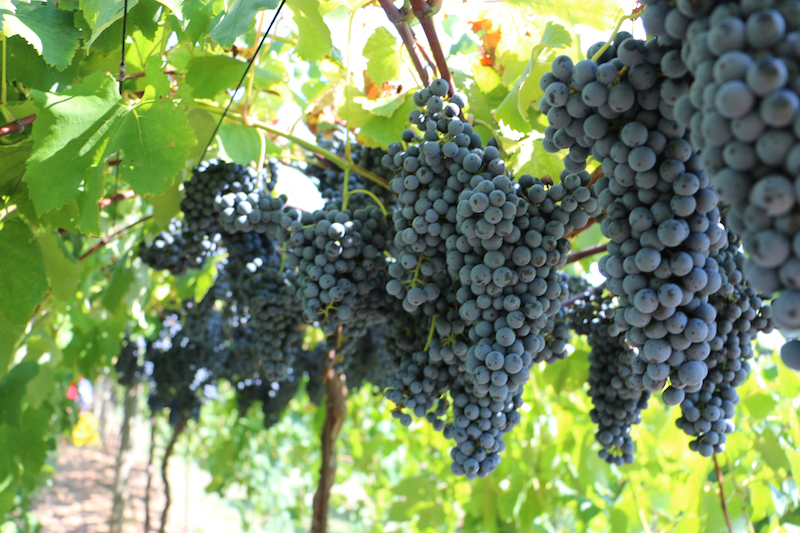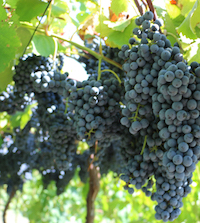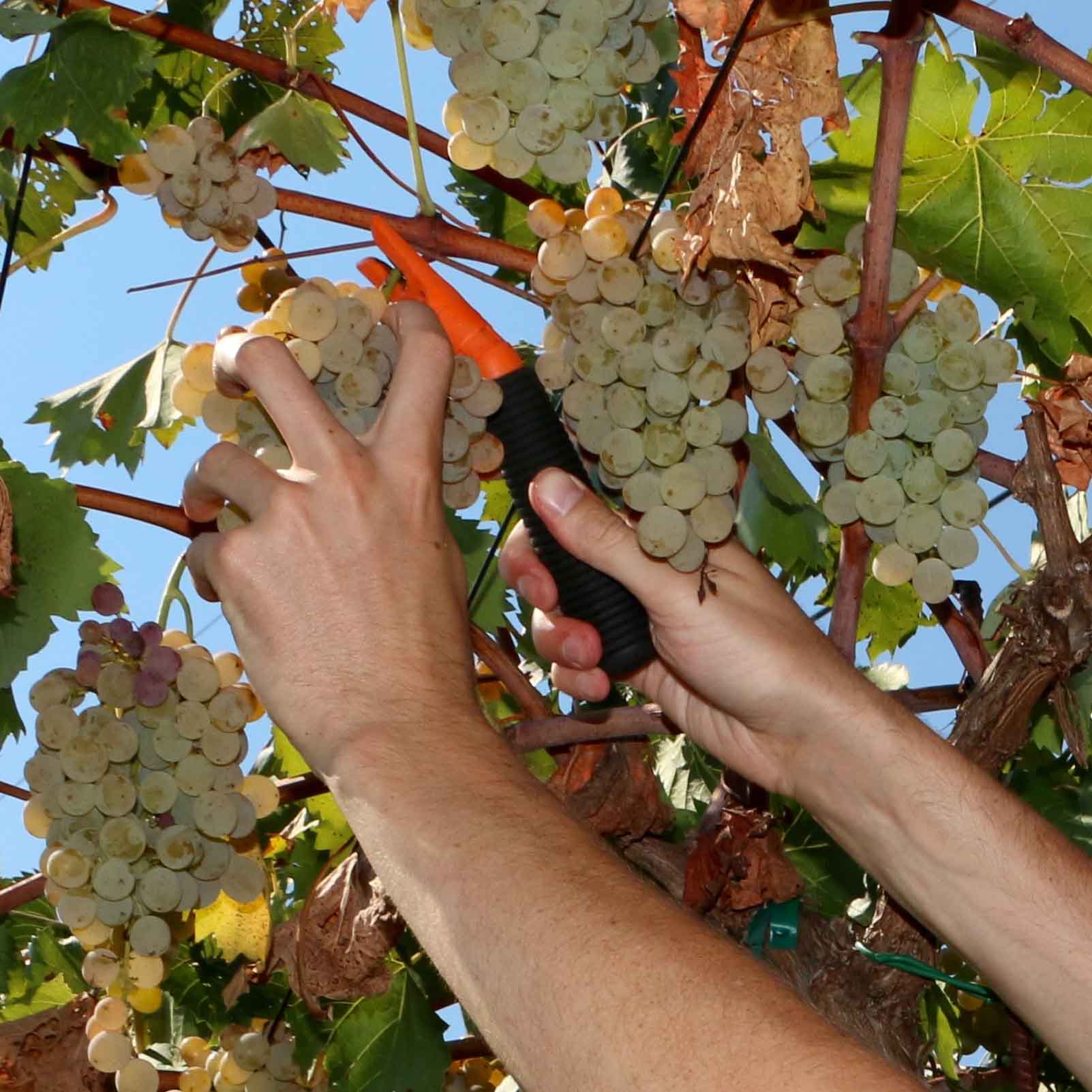Georgia’s grape industry, once dormant, is now thriving, according to Phillip Brannen, University of Georgia Cooperative Extension fruit plant pathologist. Growing potential for prosperity in the wine industry will require that farmers stay vigilant about certain diseases, like Pierce’s disease, that could negatively impact production.
“Pierce’s disease is the major disease to limit European grapes in Georgia. It is caused by a bacterium that is transmitted by numerous sharpshooter insects, such as the glassy-winged sharpshooter. It clogs the grape xylem, cutting off nutrient and water flow,” Brannen said.
Once infected with Pierce’s disease, vines die within one to two years. Because of Georgia’s warm climate, European grape varieties like merlot and chardonnay can only be grown in the foothills of the north Georgia mountains, according to Brannen. Colder temperatures reduce the number of insects present as well as bacterial numbers in the plant.
Muscadines are generally resistant to Pierce’s disease, while ‘Norton’ and hybrid cultivars vary in resistance.
Other diseases that grape producers need to watch for vary depending on the grape species. Georgia wine comes from grapes of European descent (Vitis vinifera), muscadines (Vitis rotundifolia), and the ‘Norton’ (derived from Vitis aestivalis) and hybrid cultivars. Producers worry most about powdery and downy mildews and various rots, like black rot, bitter rot, ripe rot and sour rot, Brannen said.
Powdery mildew can infect all green vine parts and produces a white, powdery growth. Early sprays are required for control, Brannen said.
Downy mildew attacks all of the green parts of the vine, but the leaves are extremely susceptible. The infected leaves drop, resulting in reduced sugars in the fruit and a decreased hardiness in overwintering buds. While leaf loss may affect the current season’s crop, it may also impact next year’s crop by retarding the maturation of canes and decreasing stored food reserves. This may kill the plant. Muscadines do not contract downy mildew.
Brannen emphasizes that any practice that promotes good drying conditions, such as proper pruning, vineyard aspect and weed control, should reduce downy mildew pressure.
One of the most destructive grape diseases in Georgia is black rot. Black rot will wipe out all of the crop as it spreads to new green growth in the spring. Growers of European and American bunch grapes should be especially wary of this disease.
“Like any other fruit, grapes can be impacted by diseases if they’re not managed correctly. Georgia farmers need to be mindful of what these diseases are and what chemical treatments are appropriate,” Brannen said.
Brannen also stresses the importance of nematode control. Nematodes are microscopic worms that feed on roots of plants and stunt plants’ growth. In grapevines, nematodes can infest the roots and inflict direct damage, increase fungal invasions on damaged roots and spread viruses. European grapes require nematode-resistant rootstocks.
In addition, Brannen suggests preplant fumigation, which may be necessary if nematode populations are high. Farmers are advised to sample for nematodes prior to planting in order to understand how significant a problem nematodes are in their vineyards.
Brannen recommends that growers purchase certified rootstock to combat certain grape diseases. If plants have been certified, then they have been officially declared free of viruses and crown gall bacteria, both of which decimate grape production in a vineyard. Crown gall bacteria can develop on trunks and canes that have been wounded by subfreezing temperatures. The plant cells active in healing the wound are susceptible to an infection.
Once wiped out by Prohibition, Georgia’s wine industry is now thriving throughout Georgia, Brannen said. Essentially, there were no wine grapes in Georgia from Prohibition until the late 1970s, but that has changed in recent years.
“The combination of locally grown (crops) and agritourism makes Georgia wine grape production a viable industry for the future,” Brannen said. “Though most wineries are in north Georgia, wineries are opening up throughout the state.”
According to the UGA Center for Agribusiness and Economic Development, the farm gate value for grapes in 2015 was more than $8.9 million.









